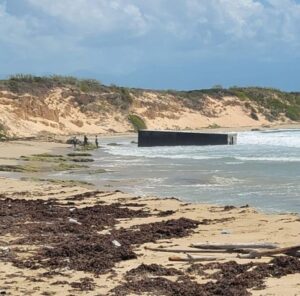Traces of radiation surface in California
LOS ANGELES, USA (AFP) — A radiation monitor in California detected a “minuscule” amount of an isotope from Japan’s crippled nuclear power plant, officials said yesterday, but insisted it was of no concern.
In the first confirmation of radioactivity having reached the US mainland, the Environmental Protection Agency (EPA) said the monitor in Sacramento had detected “minuscule quantities of the radioactive isotope xenon-133.
“The origin was determined to be consistent with a release from the Fukushima reactors in northern Japan,” it added in a joint statement with the Department of Energy.
The levels detected were some 0.1 disintegrations per second per cubic meter of air (0.1 Bq/m3) — about one-millionth of the dose a person normally receives from rocks, bricks, the sun and other natural background sources.
Similar readings were detected in Washington State, further up the US west coast, on Wednesday and Thursday, it said, adding that Xenon-133 is a gas produced in nuclear fission “that poses no concern at the detected level.”
“These types of readings remain consistent with our expectations since the onset of this tragedy, and are to be expected in the coming days.”
Overall, however, the EPA’s network of radiation sensors across the US mainland, as well as in Hawaii and Guam in the Pacific, “has not detected any radiation levels of concern,” the statement added.
“In addition to EPA’s RadNet system, the US Department of Energy has radiation monitoring equipment at research facilities around the country, which have also not detected any radiation levels of concern,” it added.
US authorities including President Barack Obama have repeatedly said they expect no harmful levels of radiation to reach the US or its territories in the Pacific.
But concerns over fallout from the Fukushima power plant, crippled by last Friday’s killer earthquake and tsunami, led to a rush to stockpile potassium iodide pills, which can protect against radiation.
The Sacramento monitor was part of a network feeding data to the Vienna-based Comprehensive Nuclear Test Ban Treaty Organisation, designed to detect “an underground nuclear test on the other side of the world”.
“These detectors are extremely sensitive and can detect minute amounts of radioactive materials,” it added.















